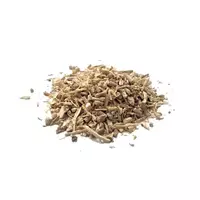Soap grass root (saponaria)

Soap grass root (saponaria) is used in many industries, including the food, as well as the cosmetic and pharmacological industries. Saponaria or soapwort belongs to perennial herbaceous plants, which are assigned according to the scientific classification to the Clove family. The saponaria plant got its original name thanks to the Latin word sapo, which literally means "soap" or "foam. "
This self-explanatory name saponaria received due to the unique ability of the plant rhizome to form foam. Science knows about 15 species of plant that grow in Eurasia. Of particular value is such a variety of saponaria as Mylnyanka medicinal or Saponaria officinalis.
Perennial saponaria medicinal plant usually reaches 100 cm in height. Medicinal soapwort grows in the CIS countries, as well as in Central Asia, Siberia, the Caucasus and Southern Europe. As a rule, saponaria chooses forest edges for growth, as well as river banks, fields and valleys. It is not uncommon for samonaria to be grown in gardens and front gardens as an ornamental plant.
In industry, the root system of the plant is used, which, due to its distinctive properties, is called nothing more than a "soap root. " By soap root is meant the root system of a number of plants that contain in their chemical composition a large amount of saponins, i. e. compounds whose solution gives foam, which in its characteristics resembles soap.
Soap grass root (saponaria) has many uses. Based on the root of soap grass (saponaria), saponins are obtained, which are used for medical and besides technical purposes. For a long time, the root of soap grass (saponaria) has been used in folk medicine as a medicine. The soap grass root (saponaria) is dried, and then the resulting raw material is used to obtain a red soap root.
The chemical composition of the red root contains the largest amount of saponins. Soap herb root (saponaria) is used in the manufacture of oriental sweets such as Turkish onion, as well as halva. The root of the plant is used in brewing, as well as in the production of carbonated drinks.
In folk medicine, saponaria root is used as a medicine for cough and pulmonary diseases. Saponaria root infusion helps in the treatment of rheumatism, hepatitis, diseases of the gastrointestinal tract and in other cases. Saponaria extract is part of medicinal ointments. Among other things, the root of soap grass (saponaria) is used for the production of soap, as well as detergents.
soap grass root (saponaria) 0.1 kCal
Energy value of the root of soapy grass (saponaria) (Ratio of proteins, fats, carbohydrates - ju):
Proteins: 0 g (~ 0 kCal)
Fats: 0 g (~ 0 kCal)
Carbohydrates: 0 g (~ 0 kCal)
Energy ratio (b | y): 0% | 0% | 0%
 Español
Español Français
Français Português
Português Русский
Русский 简体中文
简体中文 繁體中文
繁體中文 日本語
日本語 한국어
한국어 العربية
العربية Türkçe
Türkçe Қазақ
Қазақ Deutsch
Deutsch Italiano
Italiano Українська
Українська
